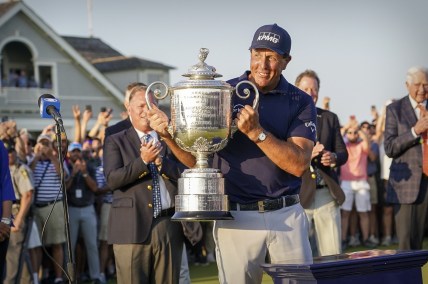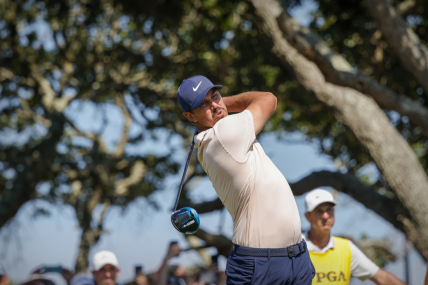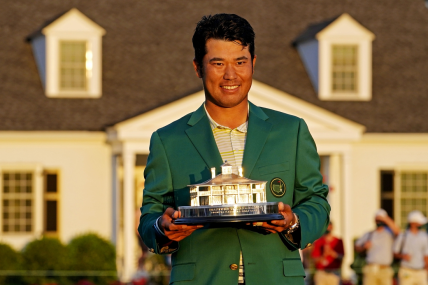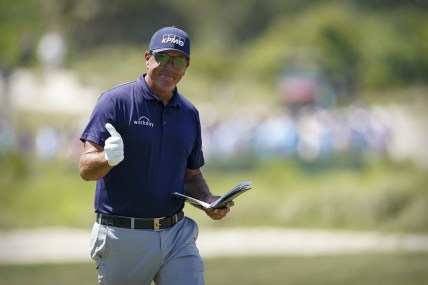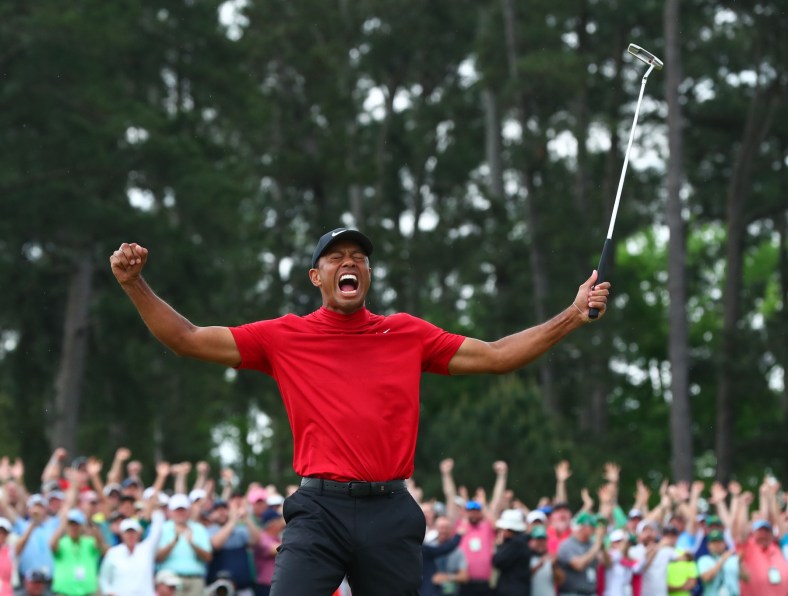
The golf majors are what punctuate the history of the sport, elevate a player’s legacies and settle debates about which golfers are better than others in the all-time conversations.
But what makes each of these annual events so special?
That’s what we’re going to explore as we take a closer look at the Masters Tournament, the U.S. Open, the Open Championship and the PGA Championship.
Before getting into each of the individual golf majors, let’s take a look at how these epic showcases garnered their distinction as Grand Slam tournaments in the first place.
What makes a ‘classic’ major golf tournament

It’s all about prestige, and a golfer’s dream of winning a major tournament someday. Winning one of the four big events guarantees golf’s immortality, regardless of how the rest of a career plays out.
There are other so-called “classic” tournaments that are held in high esteem around the sport. The European Tour’s BMW PGA Championship and the PGA Tour’s Players Championship are among them. Having said that, you never really hear about players celebrated in the same way for winning those, compared to golf majors.
Golf majors just have a different feel. The pressure is ratcheted up, and again, the best golfers’ careers are ultimately defined by how they fare in these. Some would argue Tiger Woods is golf’s GOAT, but his 15 major titles fall short of Jack Nicklaus’ all-time mark of 18.
Perhaps more than any other sport, consistency is most elusive in golf. For players to be able to stay laser-focused and be at their best for four days of the entire year is doubly difficult, which is why golf majors carry so much historic weight.
For instance, Luke Donald was No. 1 in the Official World Golf Ranking for 56 weeks from April 2011 to May 2012 during his prime. He won many tournaments around the world but never got that iconic major victory.
Brooks Koepka has won the Phoenix Open twice and a couple other events on the PGA Tour, but at age 31, he’s already won four majors. Both of his two PGA Championships and two U.S. Opens have come with winning each tournament in back-to-back fashion. Koepka is already guaranteed a spot in the World Golf Hall of Fame.
That’s the power of the majors in golf.
Breaking down the special legacies of all four golf majors
The Masters Tournament
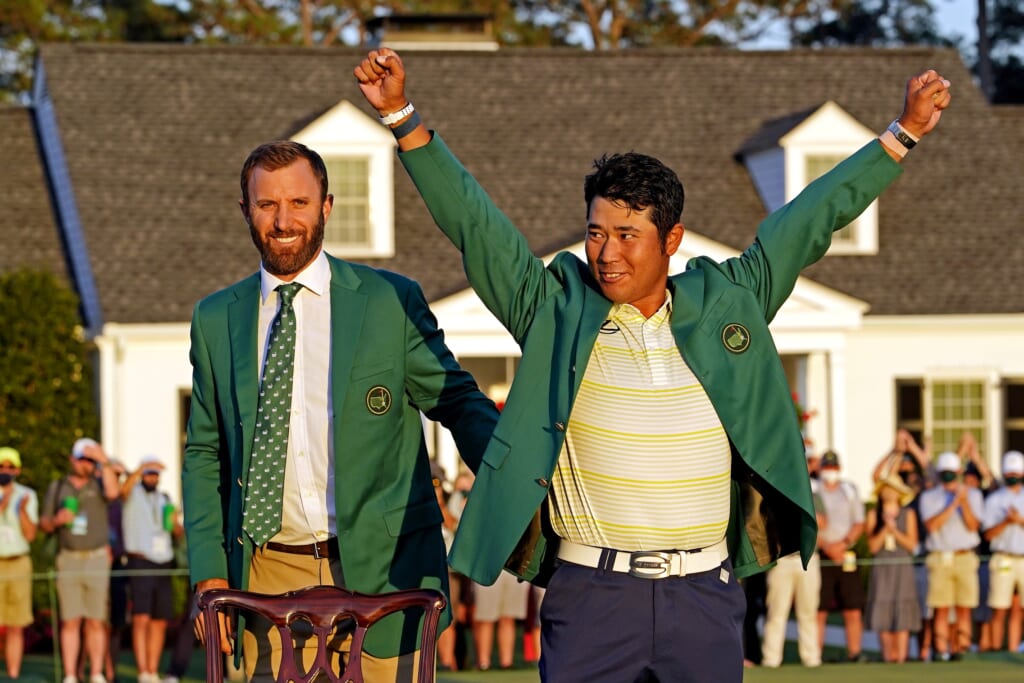
Unlike all the other golf majors, Augusta National Golf Club in Augusta, Ga., serves as the only venue for the Masters Tournament. Indeed, it is as CBS Sports broadcaster Jim Nantz calls it, “A tradition unlike any other.”
This pristine venue is as well-manicured of a golf course as you’ll ever see. A beautiful landscape lined with colorful azalea trees, flowers, and wide, rolling fairways make for a picturesque backdrop for fans to enjoy. All the holes are so close together, which makes for some serious theatrics and piercing roars from the gallery on Masters Sunday.
Every hole at the Masters has a unique name tied to it, but the most famous stretch of holes is collectively dubbed “Amen Corner.” This is the stretch between hole Nos. 11 through 13, wherein the tournament can swing in such a huge way.
Jordan Spieth made a quadruple bogey at the par-3 12th to blow the 2016 Masters, for instance — and he won the darn thing the previous year.
Three years later on the same hole Spieth made a quadruple bogey, and Francesco Molinari had a two-shot lead over eventual champion Tiger Woods entering the par-3 12th. However, a tee shot landing in the water for the Italian would result in a double bogey and giving up the lead.
Winners of this event get some hardware, but the best prize of all is the famous green jacket, which the previous champion gets to put on the new victor.
What really makes the Masters a steep challenge are the iconic, severely sloped greens. The grass is cut so close, and if there’s no rain to soften the course, it becomes especially tricky to putt on Augusta’s renowned surfaces. Moreover, the firmer the greens are, the tougher it is for players to place their approach shots in the proper places.
All these elements combine to make for some of golf’s best theatre, and it’s always the first major on the calendar, usually in April. The world’s best players often ease themselves into the season and plan their whole early part of the schedule around preparing for the stroll down Magnolia Lane.
U.S. Open
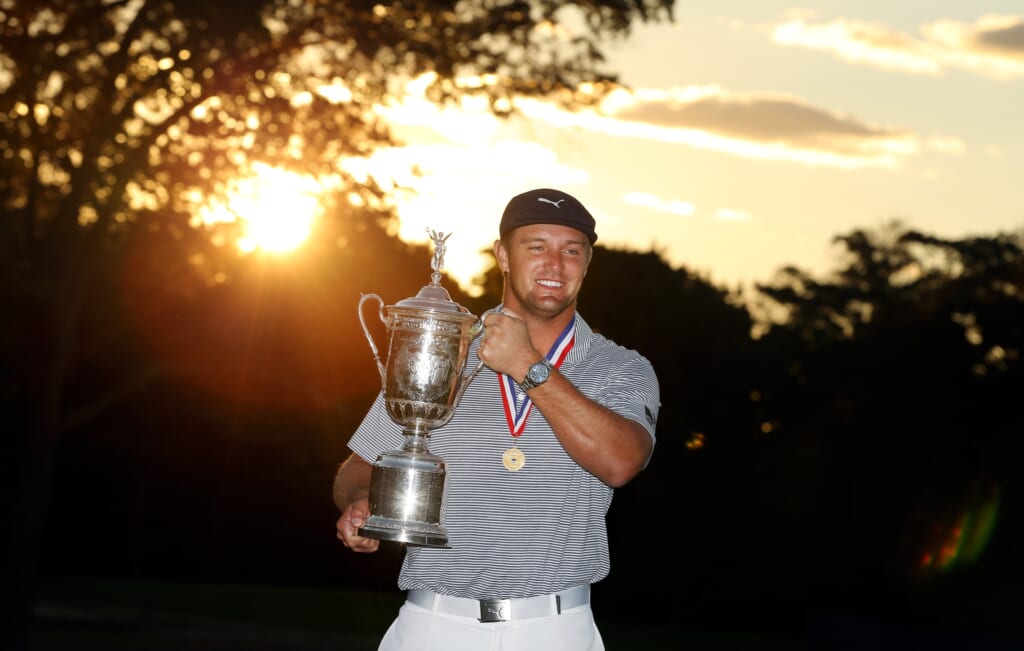
Let’s not bury the lede with this one: You’ll hear the U.S. Open often referred to as the “toughest test in golf.” More often than not, that proves to be the case.
The United States Golf Association (USGA) intentionally chooses the toughest stateside venues that will pose the ultimate challenge to the world’s best players. When everything goes according to plan, the winning score is usually around even par.
When heavy rains hit Congressional Country Club in 2011, though, Rory McIlroy was a notable exception to this general principle, as he rolled to a score of 16-under through 72 holes to win by eight.
Champions receive a gold medal that looks almost like something you’d get at the Olympics, along with a massive silver trophy. It’s probably a beast to lift after enduring 72 holes of absolutely brutal golf that is every bit as much about mental endurance as it is physical ability to execute all the shots.
That golf cliche “drive for show, putt for dough” can be applied regardless of which tournament we’re talking about, but ball-strikers tend to do the best at the U.S. Open. With pars at such a premium as opposed to birdies, anyone who can keep hitting fairways and greens will put themselves so far ahead of the curve.
If you’re having to scramble often around a U.S. Open course, you’re probably not going to last long. However, it is important to hole out long par putts, and to avoid the big numbers on the scorecard, to keep the momentum of rounds going.
Watching the U.S. Open is a starkly different experience from how all the other golf majors are. It’s more of a grind, and pars are oftentimes more celebrated than birdies.
As long as you’re in the right headspace and know that going in, there’s almost a twisted pleasure in seeing golfers who are used to lighting it up be brought to their knees by the U.S. Open’s difficulty.
The Open Championship
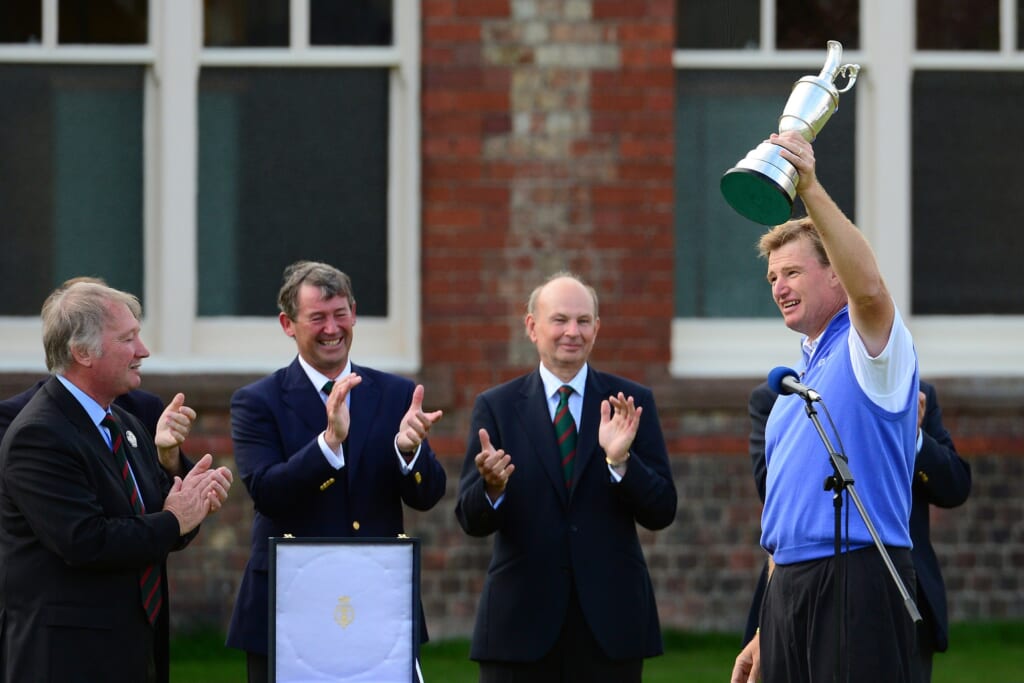
Simply put, this is the oldest tournament in all of golf as 2022 will mark the 162nd version of The Open. Anyone outside the U.S. probably wants to win the Open Championship more than any other major — or any other event in the world.
It’s referred to as the British Open by Americans, but don’t tell that to anyone across the pond. They greatly prefer the Open Championship, or simply, “The Open.”
The legendary Claret Jug is among the most unique-looking trophies in sports, and carries with it such a legacy in and of itself that dates back to 1872.
What’s also nice about the Open Championship is that it features a rotation of venues, which creates excellent variety, but keeps golf fans coming back to some of the best courses in the world.
In 1764, the concept of an 18-hole golf round was conceived at the Old Course at St Andrews in Scotland. St. Andrews is nicknamed “The Home of Golf” as a result — and it just so happens to be on the “Open Rota” of courses. It was the first new site of the Open in 1873, as the previous years it’d been at Prestwick Golf Club.
St. Andrews was home to two of Woods’ three Open triumphs, in 2000 and 2005. The first time around, Woods set the then-Open’s scoring record in relation to par at 19-under and prevailed by eight strokes. He won the second time by five shots over Colin Montgomerie.
So yes, many would argue the Open Championship is the most coveted major of all. Its unique setting frequently features throwback classic elements of links golf, where players are asked to execute old-fashioned shots around and into the greens they would not be tasked with anywhere else.
Depending on the weather conditions, scores can wildly vary by time of day, by round, or by year. You never quite know what you’ll get in the Open Championship, which is just one of many facets of its immense appeal.
PGA Championship
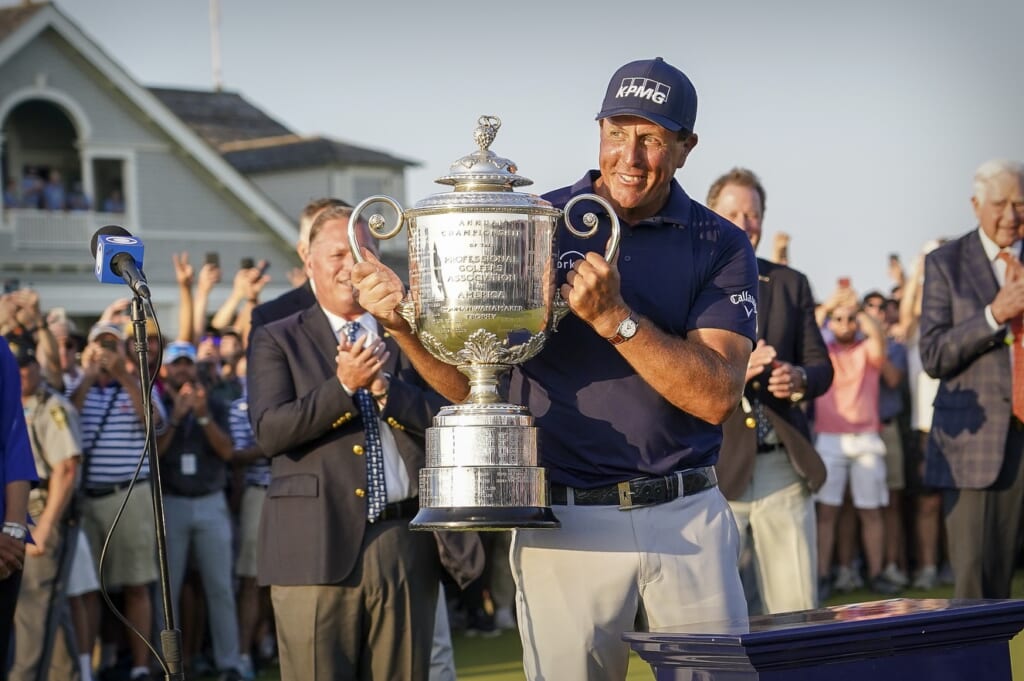
Similar to the U.S. Open in venue choice, the PGA Championship doesn’t have a specific set of courses it must rotate between, but organizers do seek out the best courses in the U.S., but allow more leeway in terms of yielding birdies.
The PGA Championship is the most modern major in the sense that it’s most like any other contemporary PGA Tour event. It’s also a tribute to the teaching professionals across the country, and to the PGA of America itself. Club professionals are even afforded the chance to qualify for the field through a preliminary tournament.
If the objective of the U.S. Open is to wear golfers out with the stiffest obstacles, the PGA Championship’s goal is to foster a tough-but-fair setup that tends to reward the players who can make birdies in bunches and have the length to manufacture opportunities where others can’t.
Power off the tee and precision on approach shots are paramount at the PGA Championship. The penalties for mistakes aren’t as severe as a U.S. Open, and you’ll often see the winning score in the double digits under par.
Because of how singular the Masters, U.S. Open and Open Championship are, it’s inevitable that the PGA Championship gets a little overshadowed. Nevertheless, it’s still considered a major tournament for a reason, and often lends itself to thrilling finishes before the super-sized Wanamaker Trophy is awarded.
Overall, the golf majors define a career and feature the heightened atmosphere that accompanies the most important major sporting events on the planet. If you’ve not jumped on the bandwagon yet or ever seen contenders come down the stretch on a championship Sunday in the final round of a major tournament, it’s well worth a try.
Matt Fitzgerald originally wrote this article. Subsequent updates have been done by Breven Honda and Sportsnaut editors.
